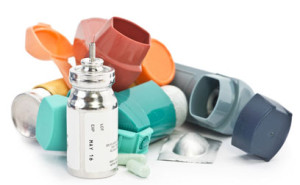 In the beginning, as in so many other afflictions where the cause is not understood, parents seeking help for their children’s asthma problems found themselves blamed for it.
In the beginning, as in so many other afflictions where the cause is not understood, parents seeking help for their children’s asthma problems found themselves blamed for it.
A past president of the College of Allergists was actually quoted in the early 1960s as saying:
“One of the commonest types of juvenile asthma is caused by an overprotective, domineering mother … the best treatment is a ‘parentectomy’ — separating the child from his mother.” ~ Allergy Quarterly, Vol. 25
We have come a long way since the 1960s in understanding asthma, and we have developed new treatments to control it, but we still don’t know why this disease is continuing to increase in numbers and severity, or how to stop it. There are many things that can bring on an asthma attack in a sensitive individual. Cigarette smoke, pet dander, mold, mildew, pollen, perfumes, and other air-borne irritants can be to blame. So can milk or other foods, and even exercise and cold air. Some studies have even shown that excessive salt can cause a “spastic” condition in the smooth muscles resulting in asthma (as well as high blood pressure).
But there is a significant problem with the studies that seek out causes for asthma. They don’t address the important fact that while many of the asthma triggers are ancient – after all, pets, mildew, and pollen have been around for a while – asthma has only increased dramatically over the past few decades. So, while there is no doubt that any or all of the above can bring about an attack in a sensitive person, they could not account for the sudden rise in occurrence and severity of asthma – especially when so many medical advances have been made in its treatment.
That leaves us to examine those triggers that are relatively new – factors that are found primarily in industrialized countries like the United States (where asthma is rampant) and things that were not in our lives until fairly recently, or that were not used in large quantity until recent years. This includes food additives, increased environmental use of fragrances, and increased exposure to synthetic chemicals of all types.
The Diet Connection
The following dyes used in medicines, foods and cosmetics were recognized by the American Academy of Pediatrics Committee on Drugs as being bronchoconstrictors as long ago as 1985:
- Red 2
- Red 3
- Red 4
- Yellow 5
- Yellow 6
- Blue 1
- Blue 2
– Pediatrics. 1985 Oct;76(4):635-43.
What is not often recognized is that a bronchoconstrictor does not have to trigger an asthma attack itself; it can sensitize the airway, preparing it to over-react to the next allergen that comes along. What is bizarre is that even today some medications for asthma actually contain these colorings and other chemicals known to cause broncoconstriction.
Asthma can also be triggered by sulfiting agents used in foods as a preservative. MSG (monosodium glutamate) has also been implicated as a potential asthma trigger for some people. These additives are not eliminated on the Feingold Program, but they are noted on our Foodlists next to products that contain them.
It has long been recognized that aspirin can trigger an attack in some people; what is less well recognized is that those same people may also be sensitive to the aspirin-like salicylate chemicals present in many otherwise-healthy foods such as apples.
What eventually became the Feingold Diet was originally used for asthma and allergies by allergists at the Mayo Clinic and Kaiser Permanente. The Feingold Program is an excellent way to help identify triggers involved in asthma attacks.




















